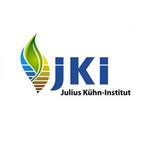Climate protection through the rewetting of peat soils and reduction of peat use
Peatlands and other organic soils (in short " peat soils") have developed under water-saturated conditions from the remains of peat-forming plants such as peat mosses. Peat is a finite resource due to its very slow growth and is regarded by the Intergovernmental Panel on Climate Change as a fossil resource. In drained peatlands, the peat body is lost, releasing a lot of carbon dioxide (CO2).
In total, an emission volume of around 54 million tonnes of CO2 equivalents was released from drained peatland soils in 2021, which corresponds to around 7% of total greenhouse gas emissions in Germany. Rewetting can stop the release of CO2. However, this requires a change in land use, e.g. in the form of paludiculture, and an end to extraction and use for substrates. A transformation of the current use of peatlands will only succeed with socially accepted and economically viable concepts for alternative uses.




